10. Jayne Mansfield’s 1966 Buick Electra 225
What Marilyn Monroe was to the fifties, Jayne Mansfield was to the sixties. With her platinum blond ‘do and buxom figure, she even closely resembled the more famous Monroe, though she was never able to quite eclipse her better known rival. She would never have the chance to do so either when she was killed, along with her lover, Sam Brody, when the Buick Electra she was a passenger in ran into the back of a slow-moving truck in the pre-dawn hours of June 29, 1967 near Slidell, Louisiana. The crash took the roof off the car as it slid beneath the truck, killing all three passengers in the front—Mansfield among them—but miraculously leaving her three young children, sound asleep in the back seat, with only minor injuries. Reports that she was decapitated in the crash proved to be unfounded, though she did die of blunt trauma to the skull. The one positive thing from the tragedy was that to prevent cars from sliding up beneath the back of tractor-trailers in the future, the National Highway Traffic Safety Administration began requiring an underride guard (a strong bar made of steel tubing) on all tractor-trailers, which ultimately became known as a Mansfield bar. As for the Buick she died in, like James Dean’s Spyder, it too briefly went on display before ending up in the Tragedy in US History Museum in St. Augustine, Florida until the museum’s closing 1n 1998. What happened to it after that is anyone’s guess, though rumors abound that it was bought by a Mansfield enthusiast for a hefty sum of money.
9. James Dean’s Porsche 550 Spyder

Not a lot of people today may know who James Dean was, but back in the fifties he was a top name in Hollywood and a rapidly up and coming actor famous for his smoldering good looks and intense style. He was also famous for his love of racing and fast, European cars, so it wasn’t remarkable that he would end his life in one. And that’s exactly what happened when, on the afternoon of September 30, 1955, Dean and his co-driver, Rolf Wutherich, were involved in a head-on collision just a mile west of the town of Cholame, California. Colliding with a monster 1950 Ford Tudor coupe as it made a turn onto Route 41 directly into the path of Dean’s speeding roadster (thought at the time to be doing better than 85 miles per hour), Dean’s much lighter vehicle flipped into the air and landed on its wheels some forty feet away. Remarkably, both men were pulled from the smashed Spyder alive, but Dean died at the scene, abruptly bringing an end to a most promising career. As for the smashed roadster, it was shown around the country for several years afterwards as part of a driver safety display but has since disappeared. No one knows its whereabouts today, though chances are it’s probably stashed away in some wealthy collector’s secret warehouse somewhere.
8. Princess Grace’s Porsche Rover P6 3500
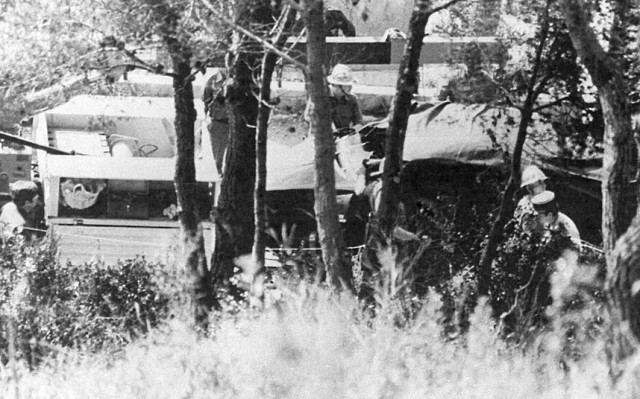
In a graphic demonstration that royalty isn’t all that it’s cracked up to be, on the morning of September 13, 1982, former actress turned Princess of Monaco Grace Kelly suffered a stroke while driving down a curvy mountainous road in Monaco (a small principality on the Mediterranean coast of France) and plunged into a ravine. The crash left her unconscious and with serious internal injuries that she died from the next day. (Remarkably, her passenger and teenage daughter, Princess Stephanie, survived the harrowing crash with just a few scratches and bruises.) Not surprisingly, like the Mercedes Benz another ill-fated royal, Princess Diana, was to die in fifteen years later, (see No. 4) the wrecked Porsche was quietly “disposed of”–supposedly by being crushed into a cube and dropped to the bottom of the Mediterranean Sea.
7. Adolf Hitler’s 770-K Mercedes-Benz staff cars
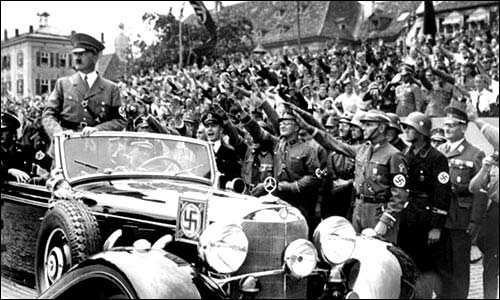
Some automobiles acquire fame—or infamy, as the case may be—by being a participant in some great historical event or grisly tragedy. In this case, however, Hitler’s staff cars were involved in neither (unless you consider World War II to be both) but are famous for being owned by arguably the most notorious figure of the twentieth century. Der Fuhrer ordered several of these massive, armored-plated behemoths to tool around the Third Reich in and, remarkably, almost all of them survive to this day. Perhaps the most famous of these is the one currently on display at the Canadian War Museum in Ottawa, Canada that was captured by an American soldier during the last days of the war. Confiscated by the army, it made its way through a succession of owners until finally ending up being donated to the museum in 1970, where it remains to this day. A second car was presented to Finnish Field Marshal Carl Gustav Mannerheim by Hitler as a gift and to cement the Finno-German alliance. Never a big fan of the German corporal, Mannerheim promptly had the car shipped off to Sweden for “safe storage” and promptly forgot about it. The Swedes eventually seized the car for back taxes and sold it to an American industrialist in 1948, who used it for promotional tours and raising money for various charities. A third car resides at the Technisches Museum in Sinsheim, Germany while others reside in the private collections of several wealthy millionaires around the world.
6. President Reagan’s 1972 Ford Lincoln Continental
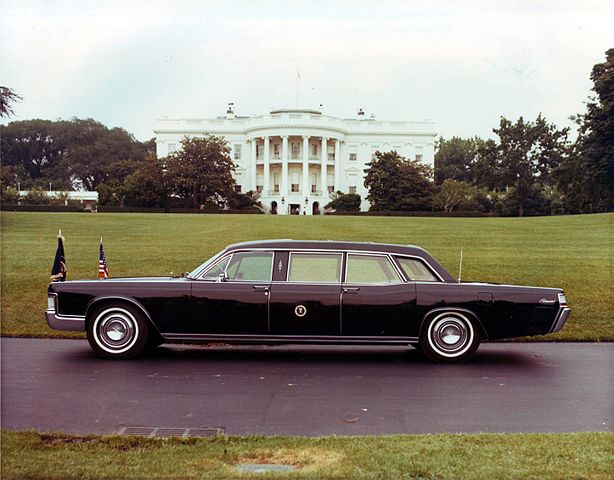
This vehicle became almost as infamous as President Kennedy’s Lincoln when newly elected President Ronald Reagan was shot while getting into the car in front of the Washington Hilton Hotel on March 30, 1981. Unlike his unfortunate predecessor, however, the bullet proved to be non-fatal—though just barely—and “the Gipper” went on to serve two terms. The car was also at another presidential assassination attempt, this one involving President Jerry Ford back in September of 1975, when a woman named Sarah Jane Moore took a few pot shots at him from across the street as he was getting into the vehicle. Moore missed, however, and spent the next thirty years in prison thinking about it. Today the car resides at the Henry Form Museum in Dearborn, Michigan next to JFK’s assassination car to serve as a poignant reminder at just how difficult protecting a sitting president can be.
5. Bonnie & Clyde’s 1934 Ford Model 730 Deluxe Sedan
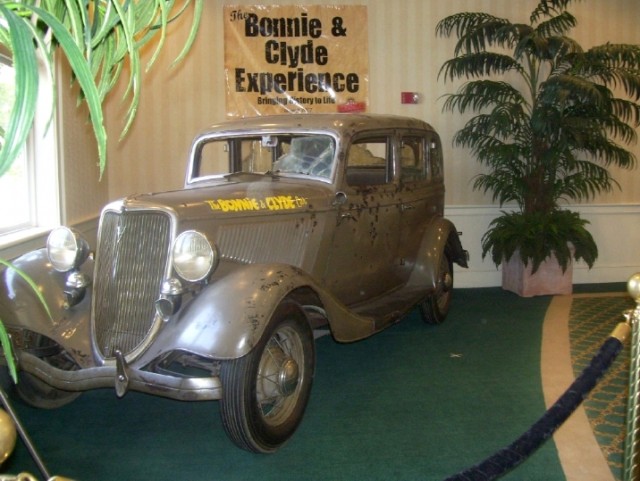
Few outlaws in history have managed to capture as much attention as did two young bank robbers, Bonnie Parker and Clyde Barrows, during the Depression years, and few cars remain as famous as the Ford V8 they died in. Ambushed by police just outside of Bienville Parish, Louisiana on the morning of May 23, 1934, the couple were cut to pieces before they could surrender (if, in fact, they were ever given the chance) and died as fast and furious as they lived. It is said that between the two of them, they were hit by as many as 160 bullets, though this is an exaggeration. The bullet-riddled car itself became an icon of the gangsterera and was put on display for decades by numerous owners before it ended up being sold to the Primm Valley Resort and Casino in Nevada for $250,000 in 1988. According to the internet, it has since been sold to the Terrible’s Casino in Nevada and is now supposedly on display at one of their casinos in Saint Joseph, Missouri.
4. Princess Diana Spencer’s (Lady Di) Mercedes-Benz W140
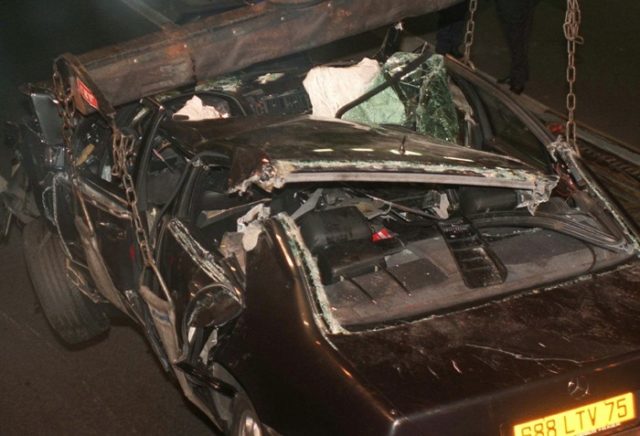
In a modern fairy tale gone horribly awry, the world was shocked when it woke up on the morning of August 31, 1997 to discover that Lady Diana Spencer, the former wife of Charles, the Prince of Wales and, had she not divorced him, a potential future queen of England, had been killed in a horrific automobile accident on the streets of Paris, France early that morning. In an event that still generates much controversy today, the official story is that she died when the car she was riding in with her fiancee, Egyptian producer and billionaire Dodi Fayed and two other men, slammed into a concrete support pillar at high speed while purportedly trying to outrun the always present paparazzi. The crash killed both Fayed and the driver instantly and left a third man and Princess Di critically injured. Though apparently conscious immediately after the accident, she expired a few hours later at the hospital from massive internal injuries. Though blame for the crash was officially placed on the driver—whom tests determined to have had an extremely high blood alcohol level at the time—others blamed the paparazzi (several of whom were arrested but later released) for being a factor, though later investigation showed they were not near the vehicle at the time of the accident. Conspiracy theories that she was killed by British Special Forces at the behest of the royal family quickly spread and, though they have never been substantiated, they continue unabated today. As for the smashed Mercedes at the center of the affair, it appears to have disappeared immediately after the crash; most likely it was quietly “disposed of” in deference to the royal family and to keep it from serving as a morbid relic of the truly tragic event.
3. Rosa Park’s Number 2857 1948 General Motors TDH-3610 City Transit Bus
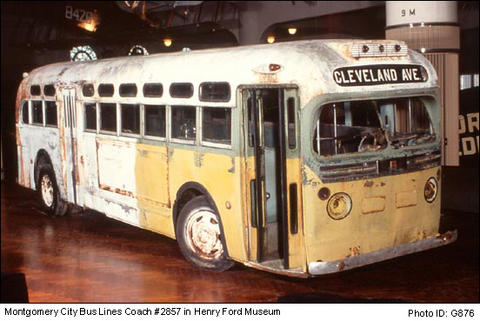
In one of the defining moments of the twentieth century, on the afternoon of December 1, 1955, a 42-year old African-American woman and Montgomery, Alabama resident by the name of Rosa Parks refused to surrender her seat to a white passenger and was dutifully arrested. Little did she realize that her simple act of civil disobedience would start a firestorm that over the course of the next decade would not only end segregationthroughout the south but would result in the sweeping civil rights legislation of the 1960s. The bus remained in service until it was retired in 1970 and was purchased by a gentlemen who left it parked in a field behind his home and used it to store tools. His descendants decided to sell it in 2000 and, after having it authenticated as the actual bus Mrs. Parks was on, eventually sold it via an internet auction to the Henry Ford Museum in Dearborn, Michigan for a whopping $428,000 (about 250 times what the bus cost new in 1948)! Restored to its original condition and looking much as it did in 1955, today it is available for public inspection as one of the most historically famous vehicles of the century.
2. President Kennedy’s 1961 Ford Lincoln convertible
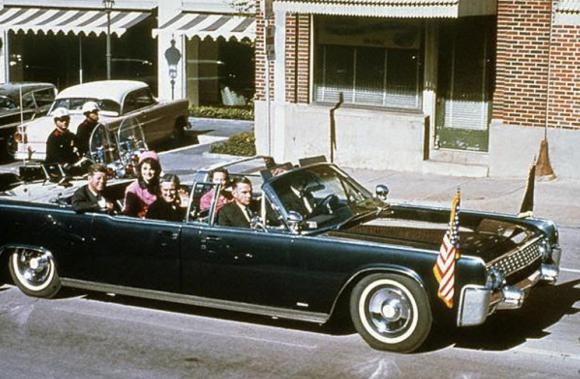
A participant in one of the seminal events of American history, few cars are as famous as the dark blue limousine President Kennedy was riding in when he was struck down by an assassin’s bullet on the streets of Dallas, Texas on November 22, 1963. In fact, few images are more iconic than that of Secret Service Agent Clint Hill clambering onto the trunk of the limo as it picks up speed in an effort to prevent Mrs. Kennedy, who had crawled onto the truck of the car, from falling off the vehicle. The car underwent a major facelift in the aftermath of the shooting—including turning it permanently from a convertible into a very hard top—and other major cosmetic changes that made it look considerably different than it did that day in Dallas. The car went on to be used by four other presidents before being retired in 1977 and today sits in display at the Henry Ford Museum in Dearborn, Michigan. Because it looks so different from the car they remember seeing in the video of the assassination, many people walk right past it, never realizing for even a moment how historically important the vehicle is.
1. Franz Ferdinand’s 1911 Graf & Stift Double Phaeton
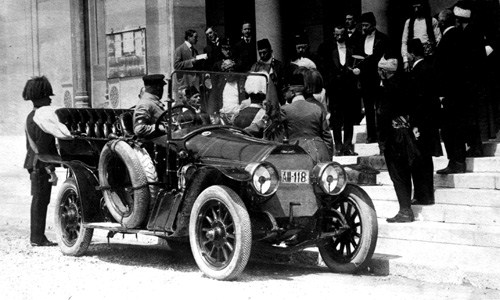
I’ve chosen this vehicle as number one for one simple reason: it was the scene of arguably one of the greatest tragedies of the twentieth century. The sort of car built exclusively for royalty, this was in this vehicle that Austro-Hungarian leader Archduke Franz Ferdinand and his wife were riding in when they were gunned down by assassins on the streets of Sarajevo on June 28th, 1914. Due to the political tensions in the region at the time, the deaths became highly politicized and led to rioting by ultra-nationalist residents against local Serbs. In a series of one diplomatic miscalculation after another, the incident eventually escalated into full-blown war when Austro-Hungary declared war on Serbia (whom it held partially responsible for the assassination), which was reciprocated a day later by Serbia’s chief ally, Russia, declaring war on Austro-Hungary. This, in turn, induced Austria’s ally, Germany, to declare war on Russia, which triggered declarations of war by France and England against Germany, until soon pretty much everybody was at war with everybody else, the result being the First World War and 16 million deaths. While urban legends swirled around the fate of the car (it was supposedly involved in numerous fatal accidents and bad luck for subsequent owners) none of these proved to be true. Instead, the car was put on permanent display in the Museum of Military History in Vienna, Austria, along with assassin’s gun and other related items, where it remains to this day to stand as a mute reminder of how very large fires can be ignited by a very small spark.
Jeff Danelek is a Denver, Colorado author who writes on many subjects having to do with history, politics, the paranormal, spirituality and religion. To see more of his stuff, visit his website at www.ourcuriousworld.com.

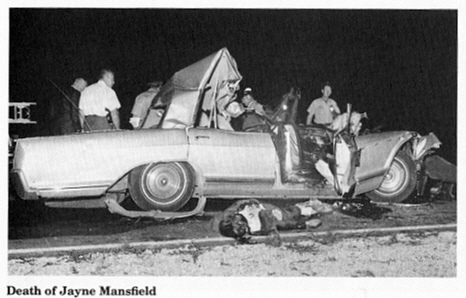

No comments:
Post a Comment